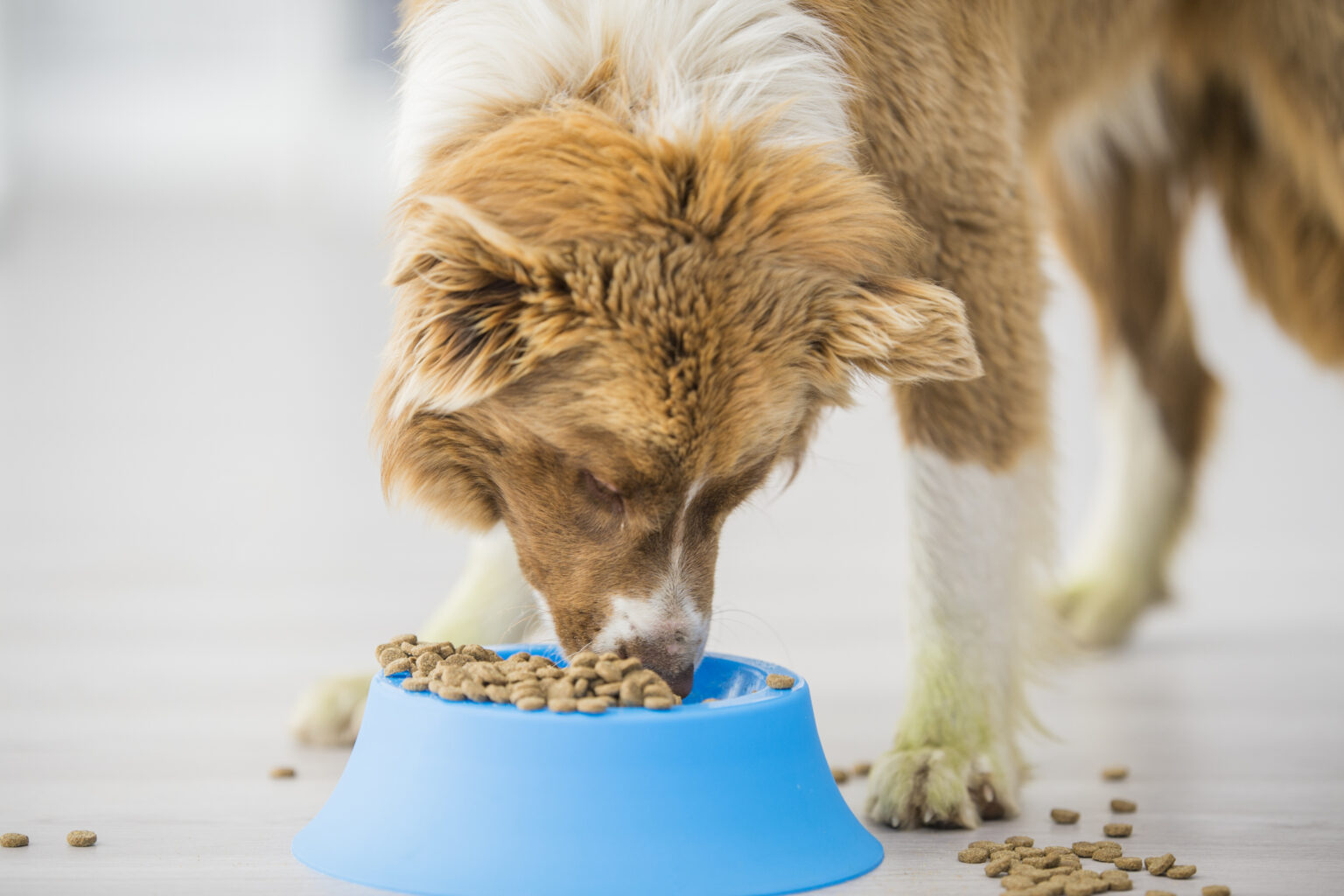Pet food labelling is strictly regulated, so labels will always look the same and contain the same information. The labels must be clear and easy to read, permanent, easy to understand, easily visible and not misleading.
Ingredients
All ingredients used to make the pet food must be included and they are listed in descending order of weight – so if ‘chicken’ is listed first, this is the main ingredient. If the name of the product includes ingredients, e.g. “Man’s Best Friend Lamb and Rice”, then the percentages of the lamb and the rice must be listed. You may often see the term ‘meat meal’ used. This refers to ground meat which has been heated at high pressure until nearly all the water has evaporated. The result is a dry powder which is used in most dry dog foods in the UK. Less meal compared to fresh meat is required as it is more nutritionally concentrated – so 10% meat meal is equivalent to a much larger % of fresh meat. It is usually listed as the source – i.e. ‘chicken meal’.
Meat and Animal Derivatives
These are sourced from animals that have been passed as fit for human consumption but are generally the parts of the animal that are not used in the human food industry.
Additives
These include vitamins, flavour, preservatives, antioxidants and colours. Most of these additives are also those used in our food. Antioxidants and preservatives are necessary to stop the fats in dried food going off.
Analysis
This will have the percentages of protein, fat, fibre and ash listed. Carbohydrate and vitamins do not have to be listed which is why the total often won’t add up to 100%. Ash is an often misunderstood term and simply refers to the mineral content of the food. Minerals are necessary to stay fit and healthy and so any complete dog food will contain these in sufficient quantities. Protein is essential for growth and repair, and is also used as an energy source. Dietary protein can come from many sources but in most cases quality is more important over quantity. Read the ingredients list carefully to find out what the sources of protein are. Fats are also essential as these are a major energy source for your pet and are also responsible for making sure that the fat soluble vitamins (like Vitamin E and K) reach the parts of your pet’s body where they are needed most.
Other Information
The address of the manufacturer, the batch number and the minimum storage life or best before date will also be clearly displayed. The packaging will also contain feeding guidelines. It is worth remembering that these are only guidelines and the actual amounts your pet requires will depend on individual size, level of activity, body condition and age.



